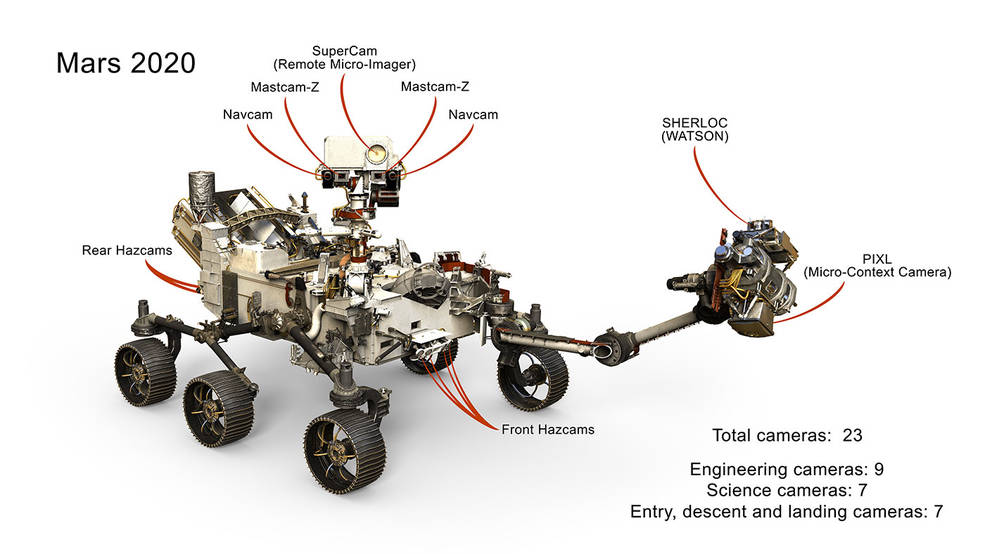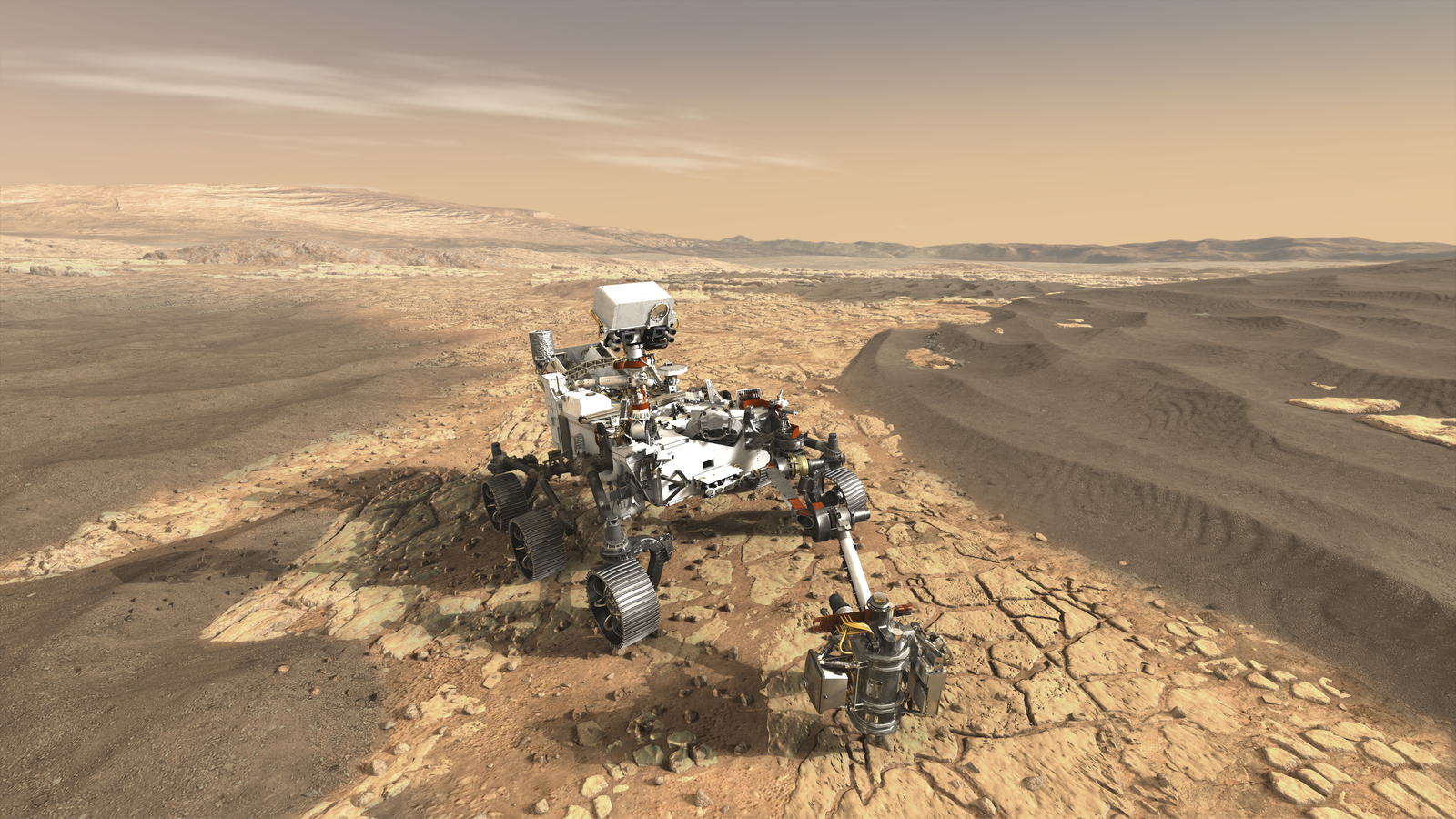By Jean-Jacques DeLisle, contributing writer
The Mars 2020 mission’s rover is set to be NASA’s next interplanetary explorer, scheduled to make it to the surface of Mars sometime in the summer of 2020. In 1997, when NASA landed the Pathfinder, it attached five cameras, with just three actually on the rover itself. The new rover model is expected to have 23 cameras, including nine engineering cameras, seven science cameras, and seven landing cameras. Light-years beyond the quantity and quality of its predecessors, this rover’s cameras will be able to give us a glimpse of Mars, which has never been seen.
The most interesting of the cameras on the Mars 2020 rover are the engineering cameras. The set is comprised of nine guidance cameras. Six are newly developed Hazard Detection Cameras, called HazCams, with four on the front and two on the back. Two are high-tech cameras — NavCams — that are located on the “mas,” or its head. One camera with microscopic imagery is attached to the underbelly of the robot, facing straight down, and known as the “CacheCam .”
The HazCams will assist the Mars 2020 rover in avoiding treacherous terrain on the planet’s surface and will also aid in the movement of the robot’s arms for taking measurements and collecting samples. Stopping periodically, the rover’s HazCams will take 3D stereo images that reveal elevation and help plot a safe course. The CacheCam is tasked with taking detailed and even microscopic images of the Red Planet’s rocks and soil before being sealed up. While serving as the rover’s sentinel, the NavCams aid Ground Control with the piloting aspects of this mission.

Some of the cameras that the Mars 2020 rover will be equipped with. Image source: NASA/JPL-Caltech.
An additional seven science and landing cams will supply high-res, long-distance, informative images and videos for years to come. These science cams are so advanced that they can see an object as small as a golf ball from 82 feet away. NASA even went so far as to write that they will be “providing a 3D view similar to what human eyes would see, only better” — a robotic 20/20 vision of sorts.
So far, the most amazing aspects of some of the rover’s cameras will be their laser beam capabilities. Mars 2020 will have targeted short-range laser beams and pulses that can turn rocks into plasma. The rover will be able to identify the laser-blasted rock’s chemical composition just from analyzing the gas that is produced. These lasers will be utilized when rocks and minerals need to be observed but are out of reach of the rover’s arms.

A look at what the rover may be doing on the surface of Mars in two years. Image source: NASA.
The daunting task of landing this rover on Mars isn’t easy, and such missions aren’t always successful. Highly advanced forms of testing and simulations help. The ambitious NASA Mars rover mission will rely on a special supersonic parachute to drastically slow the spacecraft’s descent as it enters the Martian atmosphere at over 12,000 mph. The speed at which it will be travelling combined with the density of the Red Planet’s atmosphere will create over 30,000 pounds of drag, so, of course, they’ll want everything running in optimal condition. The supersonic parachute will be made of dense nylon, Kevlar, and carbon fiber to withstand the force of entry.
On November 14 of this year, NASA tested the design for the Mars 2020 landing parachute. Ian Clark, a lead technician at the NASA’s Jet Propulsion Lab in California said, “The imagery of our first parachute inflation is almost as breathtaking to behold as it is scientifically significant” and it is definitely worth a look.
Mars 2020 will also have some interesting new gadgets along with all those cameras, included in the hope of finding and storing microbial signs of life. NASA officials wrote in a statement that “The Mars 2020 rover introduces a drill that can collect core samples of the most promising rocks and soils and set them aside on the surface of Mars. A future mission could potentially return these samples to Earth.”
From new drills to cameras to lasers, the amount of advanced tech on this rover makes it sound like “Robocop.” But with the help of these 23 eye-like cameras, finding signs of life on Mars — if there are any — should soon be within our grasp.
Advertisement
Learn more about Electronic Products Magazine





